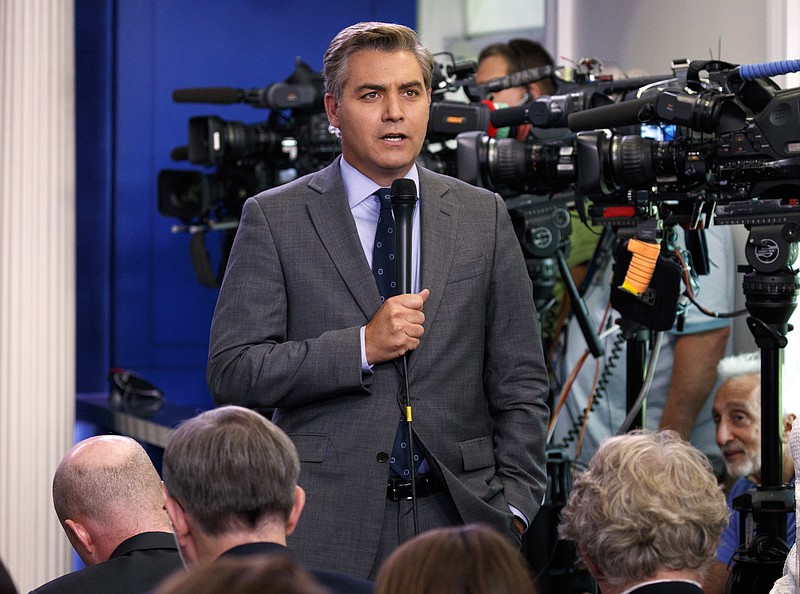NEW YORK (AP) — A video distributed by the Trump administration to support its argument for banning CNN reporter Jim Acosta from the White House appears to have been doctored to make Acosta look more aggressive than he was during an exchange with a White House intern, an independent expert said Thursday.
White House press secretary Sarah Sanders tweeted the video, which shows Acosta asking a question to President Donald Trump on Wednesday as the intern tries to take his microphone away. But a frame-by-frame comparison with an Associated Press video of the same incident shows the one tweeted by Sanders appears to have been altered to speed up Acosta’s arm movement as he touches the intern’s arm, according to Abba Shapiro, an independent video producer who examined the footage at the AP’s request.
Earlier, Shapiro noticed frames in the tweeted video were frozen to slow down the action, allowing it to run the same length as the AP one.
The alteration is “too precise to be an accident,” said Shapiro, who trains instructors to use the software. The tweeted video also does not have any audio, which Shapiro said would make it easier to alter.
Sanders, who has not said where the tweeted video came from, said it clearly shows Acosta made contact with the intern.
The White House News Photographers Association decried the sharing of the video.
“As visual journalists, we know that manipulating images is manipulating truth,” said Whitney Shefte, the association’s president. “It’s deceptive, dangerous and unethical. Knowingly sharing manipulated images is equally problematic, particularly when the person sharing them is a representative of our country’s highest office with vast influence over public opinion.”
“The irony of this White House video involving Jim Acosta is that if it is found to be doctored, it will show the administration to be doing what it accuses the news media of doing — engaging in fake information,” said Aly Colon, a professor in journalism ethics at Washington & Lee University.
CNN has labeled Sanders’ characterization of Acosta’s exchange with the intern as a lie. Its position has been supported by witnesses including Reuters White House correspondent Jeff Mason, who was next to Acosta during the news conference and tweeted he did not see Acosta place his hands on the White House employee. Rather, he said he saw him holding on to the microphone as she reached for it.
Several journalists and organizations — including the American Society of News Editors, the Associated Press Media Editors and the Online News Association — demanded Acosta’s press pass be reinstated.
“It is the essential function of a free press in every democracy to independently gather and report information in the public interest, a right that is enshrined in the First Amendment,” said Julie Pace, AP’s Washington bureau chief. “We strongly reject the idea that any administration would block a journalist’s access to the White House.”
It’s unusual for the White House to pull the so-called hard passes from journalists. During Lyndon Johnson’s presidency, the Secret Service denied clearance to Robert Sherrill, a reporter for The Nation who had gotten into physical fights with government officials. During the George W. Bush presidency, Trude Feldman, who worked for various news outlets, was suspended for 90 days after security cameras recorded her looking through a press aide’s desk late one night. In the 1970s, President Nixon tried to get Washington Post reporters banned from the White House.
Ari Fleischer, White House press secretary under George W. Bush, said on Fox News Channel on Thursday it appeared Acosta had made incidental contact with the intern and that it didn’t appear to be a justifiable reason to pull his pass.
Despite losing his White House pass, Acosta is expected to travel to Paris this weekend to cover Trump’s trip to meet with world leaders.

